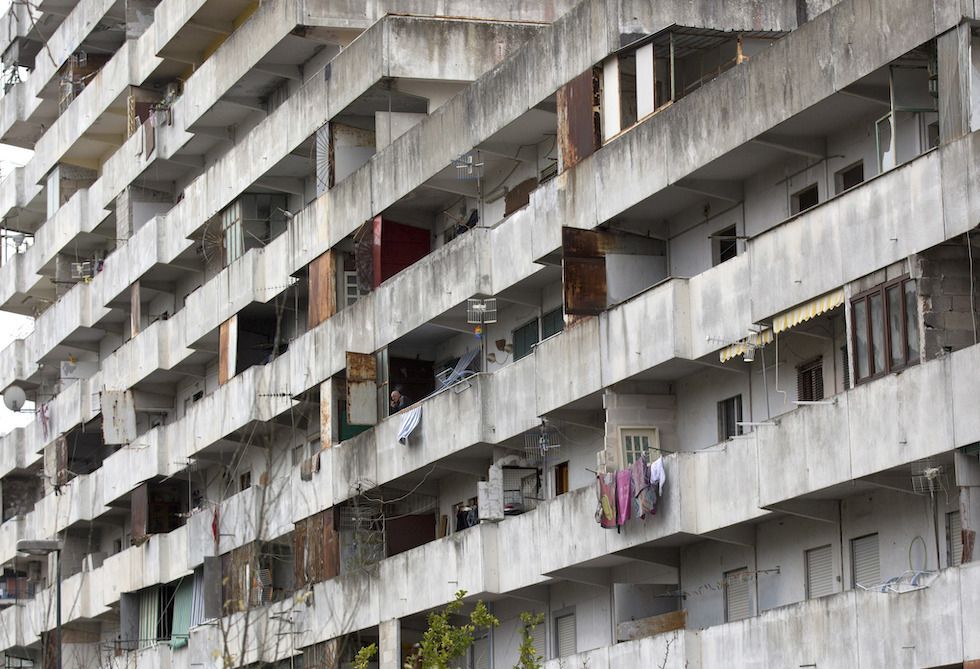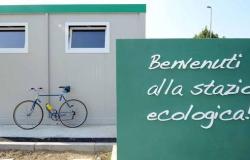A condominium in the popular neighborhood of Tor Bella Monaca, in Rome (AP Photo/Alessandra Tarantino)
More than the European average but in line with France and Germany: adapting them to the new European directive on “green homes” will most likely require a lot of money
On Friday, the European directive was definitively approved which establishes, among other things, new parameters on the energy efficiency of residential buildings, what in the Italian debate has been called the “green homes directive”. In addition to aiming for the construction of new properties that do not produce emissions by 2050, it aims to reduce energy consumption and the consequent environmental impact of existing houses and buildings by 2035, with renovation interventions for better thermal insulation of the buildings or to equip them with more modern energy systems.
Italy voted against, together with Hungary. The reason is mainly economic and was summarized by the Minister of Economy Giancarlo Giorgetti in some statements to the press in which he defined the directive as “beautiful” and “ambitious”, and then asked: “Who pays? The families? The states? Europe?”. The exact amount of costs that applying the directive will entail is difficult to establish, but regardless of who will bear them they will most likely be high, especially since the Italian real estate stock is mostly made up of old buildings with high energy consumption.
According to Eurostat data collected and processed by Sun 24 Hours in 2021, in Italy almost 54 percent of residential buildings were built before 1970, compared to a European average of 44.8 percent. However, it is not the European country where the buildings are older: there are more in Sweden, Denmark and Belgium, where they are 64.4 percent, 62.4 and 61.3 respectively. And it is practically at the same level as Germany and France, where they are 53.6 percent and 52.7 percent respectively.

(Interactive map by Info Data del Sole 24 Ore)
A generally old real estate asset leads to widespread energy inefficiencies. The most striking one is the poor ability of the walls to insulate from the outside, in order to keep the temperature as constant as possible: poorly insulated buildings will need a lot of energy to be heated in winter and cooled in summer. For this reason, among the typical interventions to reduce the energy consumption of existing buildings there is, for example, the so-called “thermal coat”, an additional covering to reduce the exchange of heat with the outside. Italy is among the top ten countries in the European Union for polluting emissions per inhabitant, linked to the heating and cooling of homes.
Substantial investments will therefore be necessary to meet the objectives set by the new European directive, which not only provides that each member state of the European Union will have to commit to reducing overall average energy consumption by 16 percent by 2030, and by at least 20 percent by 2035, but that this largely derives from the efficiency of existing buildings. In fact, at least 55 percent of energy savings must be ensured by a reduction in the average energy consumption of at least 43 percent of the homes with the worst energy performance, including those damaged by earthquakes or other natural disasters. The most significant renovation interventions will therefore be dedicated to these buildings.
How polluting a building is can be understood from its energy class, defined on the basis of a classification that goes from the most efficient houses (class A, with a consumption of no more than 30 kilowatt hours per year per square meter) to the least efficient ones (class G , over 160 kilowatt hours per year per square meter): generally class D is considered at least sufficient by modern standards. The energy class is assigned with the energy performance certificate, the so-called APE, which however not all buildings have because it is only needed in the case of sale or rental of the property, or in case building bonuses are requested for the planned renovations From law.
There is therefore no updated and complete data on the energy class of everyone existing buildings in Italy, but those in circulation are still considered fairly representative of the over 12 million buildings throughout the country. According to ENEA data (the National Agency for new technologies, energy and sustainable economic development) out of 4.9 million energy certificates relating to residential properties, 3.4 million certify properties in the lowest energy classes and below the D, i.e. E, F and G, the ones on which energy efficiency interventions will have to be concentrated: these are almost 70 percent of buildings with an APE.
Most of these buildings are older ones, built with outdated techniques that make the buildings inefficient from an energy point of view.
There are various predictions on how much it will actually cost to bring all the necessary buildings up to code, but they are still approximate and sometimes conflict with each other. According to an estimate by the National Association of Building Contractors, ANCE, which is also one of the most representative and influential in the sector, to comply with the new European requirements by 2033, interventions will be necessary on approximately 2 million buildings, for a total cost between 40 and 60 billion euros per year.
These are quite plausible figures and it is probable that in the end for Italy it will be a total expense of several hundred billion. It is equally likely to expect that a part of European funds will be dedicated to financing part of these interventions.
For Italy, the European directive arrives at a time when the government complains about tax breaks for construction with extraordinary frequency, considering them too expensive for the marginal effects they then had on the environment and the country’s real estate assets. The total expenditure connected to these tax breaks for the renovation of private properties, from 15 October 2020 to 4 April 2024, is approximately 219 billion, of which 160.3 billion for the Superbonus, and 58.7 billion for all the others bonuses. And although the figures are very large, the Superbonus has allowed the energy efficiency of only 494 thousand buildings, a quarter of the 2 million estimated by ANCE that would need new interventions to comply with European rules.

One of the buildings of what were the Vele di Scampia, in Naples, and which now no longer exist (AP Photo/Alessandra Tarantino)
However, ENEA’s 2023 report recognizes that in recent years there have been improvements in the energy efficiency of buildings, also resulting from building bonuses. In 2022, the share of properties classified in the least efficient energy categories, F and G, reduced by almost 3.7 percentage points, and at the same time that belonging to the best categories, A and B, increased thanks to new constructions.
For this reason, experts are not entirely reluctant to the idea of new bonuses, as long as they are less generous than the Superbonus and more selective: for example, they could be allocated only to those who have to renovate buildings in the lowest energy classes and to those with lower incomes. . The bonuses could also take into account the improvement in energy efficiency that the interventions ensure, rewarding those with a lower cost/energy savings ratio more. For example, according to some ENEA data cited by Corriere della Serathe thermal insulation corresponds to an annual cost of 5.47 euros for each kilowatt hour saved, while the replacement of the fixtures has a final cost of 10.98 euros for each kilowatt hour saved, double.
– Read also: We don’t yet know how much the Superbonus will end up costing
Continue on the Post







